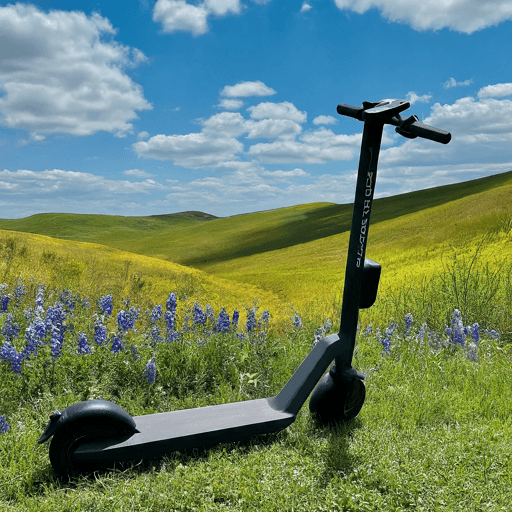
Electric bikes (e-bikes) have become increasingly popular, but like any vehicle, they depreciate over time. Understanding this depreciation is crucial for both buyers and sellers in the used e-bike market.
[RECENTLY LAUNCHED 🚀]: Check out our new E-bike Depreciation Calculator to calculate the price of your used e-bike
Factors Influencing E-Bike Depreciation
1. Brand and Model
Premium brands and models often retain value better. High-demand models may depreciate slower.
2. Condition and Maintenance
Well-maintained e-bikes with minimal wear and tear depreciate less. Regular maintenance and care can retain more value.
3. Battery Health
The battery is a critical component. E-bikes with newer or well-maintained batteries have higher resale values.
4. Technology and Features
Models with outdated technology or lacking modern features depreciate faster.
Average Depreciation Rate
On average, e-bikes can depreciate approximately 15-25% each year. The first year sees the most significant drop. A three-year-old e-bike can retain about 50-60% of its original value, depending on the factors mentioned.
Used E-bike Resale Value
The resale value of a used e-bike can vary greatly. For example, an e-bike purchased for $3,000 might sell for:
• After 1 Year: Around $2,250 - $2,550.
• After 3 Years: About $1,500 - $1,800.
These are rough estimates and can vary based on the specific bike and market conditions.
Upgrades That Pack a Value Punch
You may not want to sell your used e-bike as is. Sometimes, it makes sense to invest a little in upgrades and maintenance to command top dollar when you go to sell. Here are some of the top recommendations:
Battery Boost: A fresh battery is often the most significant investment. If your battery is nearing the end of its lifespan, consider a new one. Even a slightly upgraded battery can add substantial resale value.
Tires for the Terrain: Upgraded tires tailored to popular riding styles significantly broaden a bike's appeal. Consider the Ultraverse Fat Tire for commuter-friendly, puncture-resistant performance.
Lights & Visibility: Integrated lights and reflective accents are not only safety features but also value enhancers, attracting a wider range of buyers. The Gator Bike Light Set provides excellent visibility and is easy to install.
Must-Have Accessories that Increase Resale Value
Fenders: Practical and keep your ebike looking clean. The Rockbro Fender Set offers full coverage and durability.
Quality Lock: Security-conscious buyers appreciate seeing a good lock included. A top pick is the Kryptonite New York Fahgettaboudit Mini U-Lock, known for its durability and high level of security.
Rack or Panniers: Commuter-focused accessories immediately expand the bike's use cases. The Ibera PakRak Bicycle Touring Carrier Plus+ is a versatile rack that can accommodate various pannier styles
Where to Sell Used E-Bikes
1. Local Bike Shops
Some bike shops offer certified pre-owned e-bikes which have been inspected and serviced.
2. Online Marketplaces
Websites like eBay, Craigslist, and Facebook Marketplace are popular for finding used e-bikes. Caution is advised due to the lack of warranties or guarantees.
3. Specialized Online Platforms
• Platforms like The Pro’s Closet or BikeExchange specialize in used bikes and often have a selection of e-bikes.
4. E-Bike Forums and Communities
Online forums and communities can be a good source to find well-maintained used e-bikes, as enthusiasts often take good care of their bikes.
Best Ways to Transact When Buying an E-Bike: Credit, Venmo, or Cash?
When selling an e-bike, choosing the right transaction method is crucial to ensure a smooth and secure sale. Cash is often considered the most straightforward option, providing immediate payment without the need for intermediary processing. It eliminates the risk of chargebacks and delays, making it a preferred choice for many sellers. However, handling large sums of cash can be risky, and it's essential to take safety precautions, such as meeting in a public place.
Venmo is another popular option, especially for buyers and sellers who prefer digital transactions. Venmo offers the convenience of instant payments, and the transaction is easily traceable. However, it's important to note that Venmo is designed for personal transactions, and using it for business could violate its terms of service. Additionally, while Venmo transactions are generally secure, they do not offer the same level of fraud protection as credit cards.
Credit cards offer another alternative, particularly if the buyer prefers a method that provides purchase protection. However, accepting credit card payments typically requires the seller to have a payment processor or merchant account, which might not be practical for individual sellers. Additionally, credit card transactions can involve fees that cut into your profits, and there is always the risk of chargebacks, which can be problematic if the buyer disputes the transaction after the sale.
Conclusion
While e-bikes do depreciate over time, understanding the key factors that affect their resale value can help you make informed decisions, whether you’re buying or selling. It’s important to research, inspect, and, if possible, test ride before purchasing a used e-bike. With careful consideration, buying a used e-bike can be a cost-effective way to enjoy the benefits of electric cycling.


